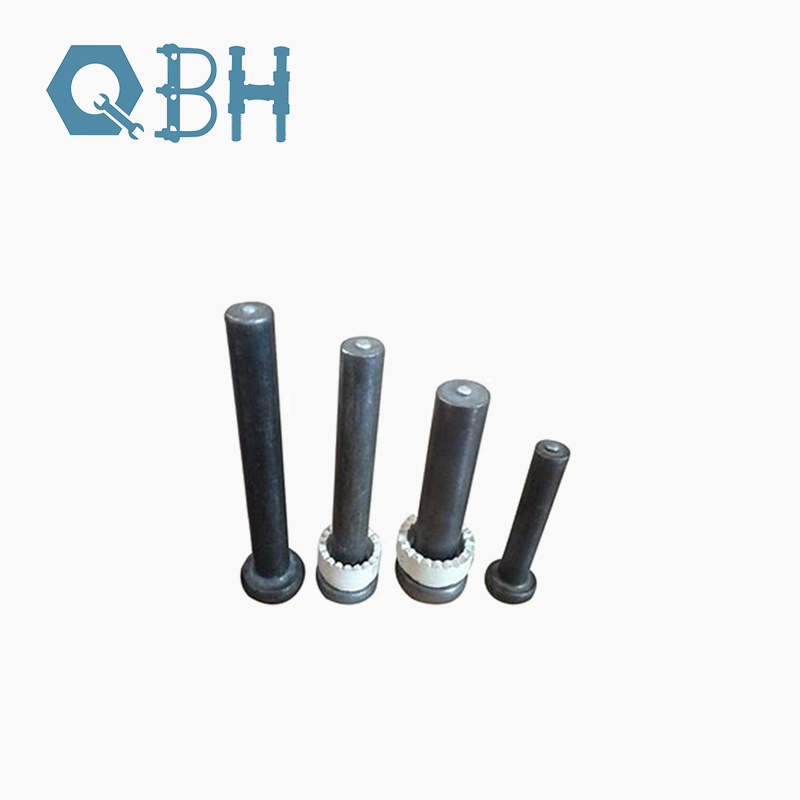Why Are Shear Studs Revolutionizing Modern Construction Engineering?
2025-10-17
In the evolving landscape of structural engineering, shear studs have become a crucial component in composite construction systems. These small but powerful connectors play an essential role in transferring forces between steel beams and concrete slabs, enabling buildings, bridges, and infrastructure to withstand dynamic loads efficiently. A shear stud, often known as a headed shear connector, is welded onto a steel beam before the concrete is poured. Its function is to ensure that both materials — steel and concrete — act as a single, unified structure, significantly enhancing load-bearing capacity, rigidity, and overall safety.
The use of shear studs is not just about structural integrity; it represents the synergy of materials science, precision engineering, and construction innovation. By bonding steel and concrete, these connectors minimize slippage and deformation under stress, thereby improving both the performance and longevity of the structure.
Shear studs have gained widespread use in applications such as high-rise buildings, industrial floors, composite bridges, offshore platforms, and infrastructure projects that require maximum strength and reliability. Their rise in popularity is closely tied to modern design standards emphasizing load efficiency, sustainability, and cost reduction — all of which shear studs support exceptionally well.
Below is a detailed breakdown of the key technical parameters that define high-quality shear studs used in global construction:
| Parameter | Specification Range | Description |
|---|---|---|
| Material Grade | Q235, Q345, or 304/316 Stainless Steel | Ensures mechanical strength and corrosion resistance |
| Stud Diameter | 10mm – 25mm | Standard diameters for diverse structural applications |
| Stud Length | 50mm – 300mm | Adjusted based on beam and slab thickness |
| Tensile Strength | ≥ 450 MPa | Guarantees reliable shear resistance |
| Yield Strength | ≥ 350 MPa | Maintains structural stability under load |
| Welding Base | Standard Ferrule Arc Stud Base | Provides consistent welding performance |
| Surface Finish | Polished or Galvanized | Enhances anti-rust and bonding durability |
| Certification Standard | ISO 13918 / AWS D1.1 / BS EN ISO 14555 | Meets international safety and quality standards |
These technical parameters ensure that shear studs are capable of delivering optimal structural behavior, whether in seismic zones, bridge decks, or large-scale industrial projects.
Why Are Shear Studs Becoming a Global Construction Standard?
The rapid adoption of shear studs in civil engineering stems from their mechanical efficiency, construction speed, and economic advantage. As construction projects become more complex and sustainability takes center stage, shear studs offer a blend of simplicity and high performance that few other components can match.
Key Advantages of Shear Studs:
-
Enhanced Load Transfer Efficiency – They enable full composite action between steel and concrete, improving overall stiffness and reducing deflection.
-
Faster Installation – With automatic stud welding equipment, contractors can install thousands of studs per day with consistent quality.
-
Improved Structural Safety – By locking the steel beam and concrete slab together, shear studs reduce vibration and resist dynamic loads from wind or seismic forces.
-
Reduced Material Costs – Optimized composite design allows for thinner slabs and lighter beams without compromising strength.
-
Long-Term Durability – Corrosion-resistant coatings and stainless steel options ensure performance in harsh environments such as marine or coastal projects.
-
Sustainability – The composite method reduces material waste, supports energy efficiency, and aligns with modern green building certifications.
Furthermore, with the increasing demand for high-rise urban development and infrastructure renewal, shear studs have become integral to building resilient, sustainable cities. They not only ensure structural cohesion but also align with modern engineering trends focused on lightweight design, fast assembly, and modular construction.
The global trend also highlights the importance of compliance with recognized standards such as ISO 13918 and AWS D1.1, ensuring every project maintains international consistency and quality assurance.
How Do Shear Studs Work in Real-World Applications?
To understand how shear studs function, one must examine the mechanics of composite construction. When a concrete slab rests on a steel beam, both materials attempt to carry loads differently — steel primarily resists tension, while concrete excels under compression. Without shear connectors, slippage occurs at the interface, leading to stress concentration and potential failure.
Shear studs eliminate this issue by creating a mechanical interlock between the steel and concrete. During loading, the studs resist horizontal shear forces, ensuring both materials deform together as one composite element. This results in a stiffer, stronger, and more stable structural member.
Engineering Principle:
The load transfer occurs through the shear resistance of each stud. Each stud acts as a small cantilever embedded in concrete, and its capacity depends on diameter, material grade, and weld strength. The design typically ensures that the stud’s shear strength matches or exceeds the composite section’s design load, guaranteeing safety even under extreme conditions.
Application Examples:
-
Bridges: Shear studs are used on steel girders to connect the deck slab, distributing traffic loads evenly and enhancing fatigue life.
-
Buildings: Used in floor systems and core walls to improve rigidity and minimize floor vibration.
-
Offshore Platforms: Provide secure anchorage between steel decks and reinforced concrete layers for wave and impact resistance.
-
Industrial Facilities: Enhance the performance of heavy machinery foundations and storage tanks.
With advancements in automated stud welding technology, installation has become faster and more accurate. Modern stud welding machines use ceramic ferrules to contain the arc, ensuring a clean, full-fusion weld. This guarantees that each shear stud is securely anchored, offering long-term performance even under dynamic or cyclic loading conditions.
What Is the Future of Shear Stud Technology and How Does QBH Contribute?
The future of shear stud technology is defined by innovation, sustainability, and digital precision. As construction enters a new era driven by smart materials and automation, shear studs are expected to evolve in several key areas:
-
High-Strength Alloys and Advanced Coatings: The next generation of studs will incorporate corrosion-resistant alloys and nanocoatings for extreme environments.
-
Prefabricated Modular Integration: Studs will be pre-installed in factory-fabricated modules, reducing on-site labor and enhancing quality control.
-
Smart Quality Monitoring: Integration with digital sensors to track weld integrity and stress performance in real time.
-
Carbon-Neutral Manufacturing: Eco-friendly production methods and recycling initiatives will minimize environmental impact.
-
3D Printing and Customization: Future innovations may include additive manufacturing of specialized studs for unique load conditions or architectural designs.
These trends indicate that shear studs will continue to be the silent enablers behind the world’s most resilient and efficient structures.
Common Questions About Shear Studs
Q1: How can the quality of shear stud welding be tested on-site?
A1: On-site testing typically involves a combination of visual inspection, bend testing, and ultrasonic testing. Visual inspection ensures correct alignment and full weld fusion, while bend tests confirm mechanical integrity. Ultrasonic testing provides a non-destructive evaluation of internal defects, ensuring compliance with standards such as AWS D1.1.
Q2: What factors affect the shear capacity of a stud connector?
A2: The shear capacity is influenced by stud diameter, concrete strength, spacing, and embedment depth. Larger diameters and higher concrete strengths increase resistance, while adequate spacing prevents group effects that reduce effectiveness. Design engineers must calculate these parameters precisely using formulas outlined in EN 1994-1-1 (Eurocode 4) or AISC guidelines to ensure safety.
As the construction industry seeks greater efficiency, QBH stands at the forefront of this transformation. With years of expertise in manufacturing precision-engineered shear studs, QBH provides products that meet ISO 13918, AWS D1.1, and EN ISO 14555 standards. Each stud undergoes rigorous quality control, ensuring exceptional performance and durability in the most demanding projects.
QBH continues to innovate by integrating sustainable materials, advanced surface treatments, and fully automated production lines — aligning with the global move toward smarter, greener construction systems.
For technical inquiries, product specifications, or custom project support, contact us today to learn how QBH shear studs can enhance your next construction project with precision, strength, and reliability.





